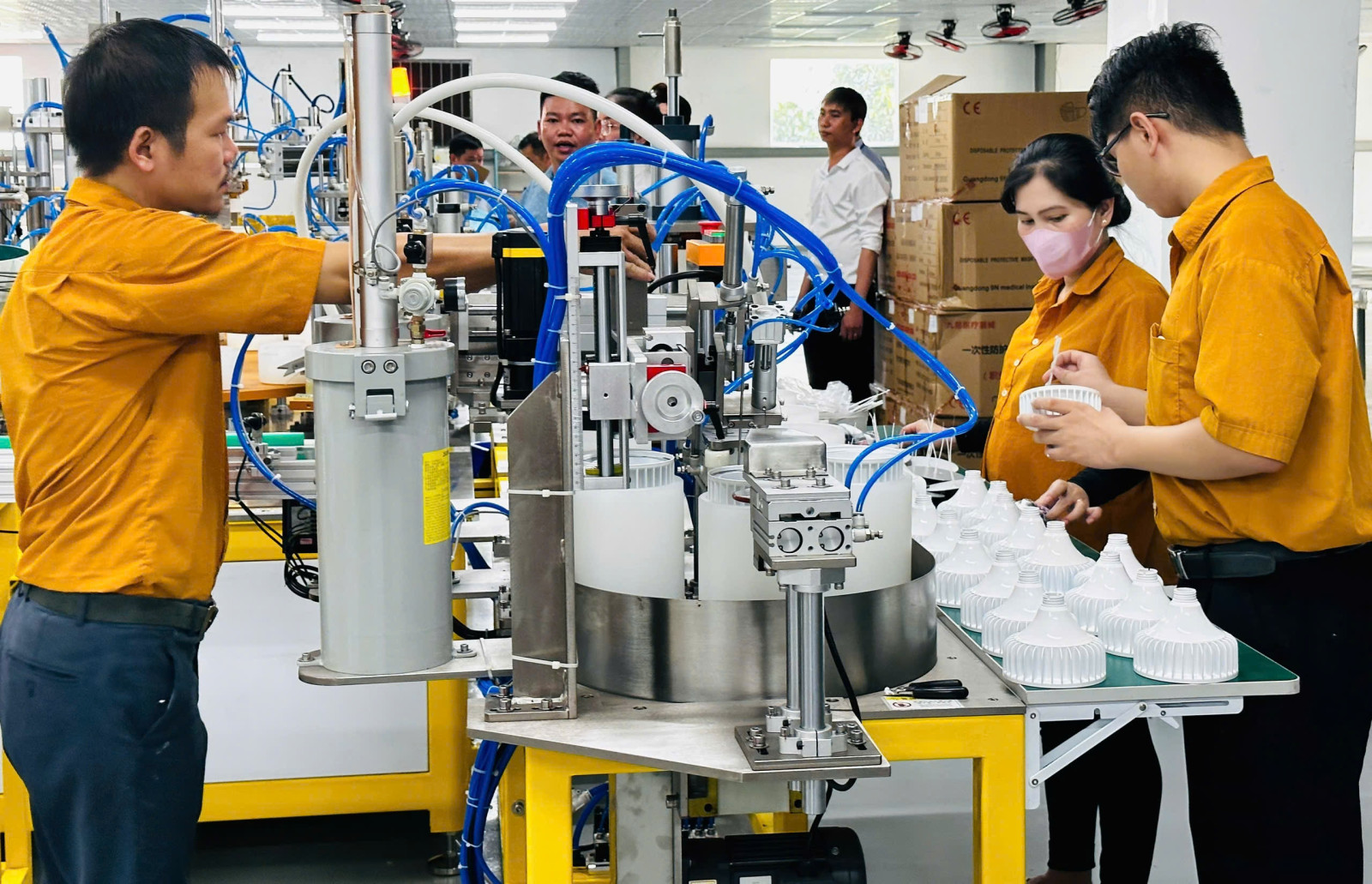Solving challenges, promoting auxiliary industries
To meet development requirements in the new period, Binh Duong has continued planning to develop auxiliary industries, soon complete the planning of raw material and auxiliary industrial areas, along with gradually increasing the localization ratio of products.
Many challenges
In the first 10 months of 2024, the province's industrial production index (IIP) increased by 6.5% compared to the same period in 2023. Industrial production is the main growth driver of the province. Currently, implementing provincial Planning for the period of 2021-2030, with a vision to 2050, Binh Duong is synchronously implementing a number of key solutions such as forming up the "Binh Duong Innovation Zone" to create motivation for new development, international integration, attracting more investment projects.

Binh Duong is taking many solutions to promote the development of auxiliary industries. In picture: Electronic components being made at Kim Sang Company in Tan Uyen city
One of the key tasks done by Binh Duong is to address challenges to increase its localization rate, thereby enhancing the value of industrial products produced by domestic businesses and integrating the local industry into the global value chain more deeply. Nguyen Quang Vu, Chairman of Binh Duong Leather and Footwear Association noted that Binh Duong is considered as a hub for industries such as textile-garment, leather and footwear, mechanics and electronics. However, most of these sectors still rely heavily on imported raw materials. With customers’ increasingly stringent demands, enterprises are required to innovate their technology to meet product quality standards. In fact, increasing the localization rate helps enterprises save on input material costs, thereby reducing production costs, making their products more competitive in the market.
"Binh Duong currently has nearly 2,300 enterprises in auxiliary industries. However, the localization rate only meets about 40%-45% for textile-garment, footwear and 15% for electronics and information technology...Enterprises need to implement solutions to develop auxiliary industries in order to gradually increase the localization rate in key industrial sectors", Mr. Vu stated.
According to Nguyen Thanh Ha, Deputy Director of provincial Department of Industry and Trade, the province has recently developed industries producing raw materials for industries of textile-garment, leather and footwear, mechanics, electronics... Although the province’s auxiliary industries have seen significant improvement, they still do not fully meet domestic production demands in terms of both quantity and quality.
Establishing specialized industrial parks
Nguyen Thanh Ha, Deputy Director of provincial Department of Industry and Trade shared that in order to foster sustainable and in-depth industrial growth, Binh Duong has actively supported enterprises in developing auxiliary industries. As part of this effort, the province is investing in the development of four auxiliary industrial compounds, covering an area of 75 hectares each. Additionally, Binh Duong has planned a specialized industrial park for the mechanical sector to promote the growth of auxiliary industries.

Binh Duong is striving to overcome challenges to elevate the local auxiliary industry in line with its potential. In picture: Production line at Kolon Industrial Company in Bau Bang district
Province-based enterprises in auxiliary industries are being facilitated to gradually join in the global supply chain. The business community hopes that auxiliary industries will foster linkages and specialization, paving the way for a system of domestic suppliers of raw materials and high-tech component manufacturers. To achieve this, according to Luu Tri, Director of Nghe Nang Industrial Co., Ltd. in Thuan An city, domestic companies first need to strengthen connectivity, technology transfer and innovation know-how between foreign-invested and local enterprises.
Currently, numerous auxiliary industrial projects are increasing investment capital and expanding production. Recently, Panasonic Electric Works Co., Ltd. has officially launched a wiring device manufacturing plant at the Vietnam-Singapore Industrial Park II. This new facility boosts the company’s production capacity by 1.8 times, reaching nearly 150 million devices per year. Tatiana Liceti, Executive Vice President for Market Operations at Tetra Pak (Sweden) affirmed: “We are more committed than ever to the Vietnamese market and will continue increasing our investments here. The expansion of our aseptic packaging plant in Binh Duong, expected to be completed and put into operation, is in the second quarter of 2025, is a clear demonstration of that commitment. With new production capabilities, we are confident in enhancing service quality, supporting our clients in seizing new opportunities and achieving outstanding success together”.
Reported by Tieu My-Translated by Kim Tin

